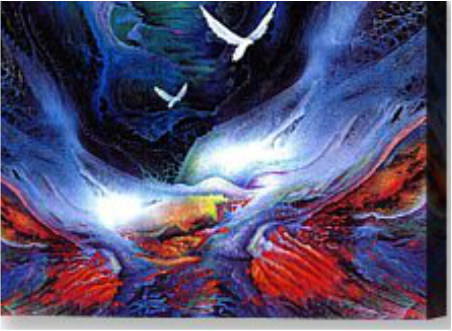 The Biblical Image by Igor Paley. Just saying. The Biblical Image by Igor Paley. Just saying. There is something ancient about the National Pastime that evokes the spiritual, the other-worldly. I submit “The Natural” and “Field of Dreams.” Now two friends of mine have written topical essays about the overlap between baseball and the Jewish holy days. In New York, we are used to glorious weather for Rosh Hashanah and Yom Kippur. Last Sunday, the rain stopped right around sundown on the Jewish New Year to let the United States Open begin, albeit three hours late. Tennis fans did not have to be Jewish to benefit from the cessation. The baseball season is always in its crucial days when the holy days arrive. My friend Mendel Horowitz, rabbi and family therapist in Israel, who often contributes insightful comments on this site, has written about the intersection of the sacred and the profane. Here is the link from the Washington Post the other day: https://www.washingtonpost.com/news/acts-of-faith/wp/2015/09/16/yom-kippur-is-about-to-collide-with-baseball-but-the-two-go-so-naturally-together/ And my friend Hillel Kuttler from Baltimore has written about an event half a century ago, when Sandy Koufax chose to not pitch the opening game of the World Series on Yom Kippur. Kuttler discusses the message Koufax sent to Jews (and others.) The link from the Jewish Telegraphic Agency: http://www.jta.org/2015/09/08/life-religion/why-sandy-koufax-sitting-out-a-world-series-game-still-matters-50-years-later I covered that World Series in Minnesota, when Don Drysdale, the second ace, was hammered. Kuttler repeats the anecdote that when manager Walter Alston came to the mound to take him out in the third inning, Drysdale said, "I bet right now you wish I was Jewish, too." Everybody low-keyed that observance, including Koufax. He just never worked on that day. The Dodgers won the Series anyway. Woe to people who ignore the holy days. In 1986, Major League Baseball scheduled a night game and a subsequent day game -- not one game but two -- within the 24 hours of Yom Kippur. In New York. I’m not Jewish, but I know from chutzpah. My column on Oct. 1, 1986, predicted a deluge: http://www.nytimes.com/1986/10/01/sports/sports-of-the-times-mets-forecast-a-deluge.html The Sunday night game was rained out. Of course. Mendel Horowitz and Hillel Kuttler understand.
Mendel
9/17/2015 11:21:16 am
Yom Kippur, this year, falls on September 23. The MLB season ends October 4. Jews offer an annual prayer for rain on October 5, at the close of the Tabernacle holiday. The profane and the sacred will not clash this year in the playoffs. Unless, of course, the Yankees play the Mets.
Mendel
9/17/2015 04:21:00 pm
Hillel, nice meeting you. I was going to make George an honorary member, but then learned he was conferred before I was born. A mensch indeed.
George Vecsey
9/18/2015 07:48:11 am
Guys, thanks. It's true. I was proclaimed an honorary landsman back in the early 80's by my good friend Rabbi Wolfe Kelman, at their family Seder, after I had sung an old Hebrew song we had learned in chorus at Jamaica High. I appreciate the sentiment. Best, GV 9/17/2015 10:38:14 pm
I remember all the positive comments when Sandy Koufax did not play on Yom Kippur. This is the first I heard about Drysdale's comment.
George Vecsey
9/18/2015 07:54:28 am
Alan, I covered that series. You are right -- the World Series was a different entity in sunlight. Of course, Willie Davis lost a fly ball in the sun that same Series. The Series was an event. Now it's a post-script, always in the dark, usually in nasty weather. I can tell you, many times I covered the last 10-20 years, I just wanted it over. Not that amazing things didn't happen 'round midnight (Mookie, etc.) but as a morning person I say, it's just too late.
bruce
9/23/2015 01:18:54 pm
George,
George Vecsey
9/23/2015 02:16:24 pm
http://www.retrosheet.org/boxesetc/1966/B10060LAN1966.htm
Elliott Kolker
3/2/2016 07:31:57 am
Comments are closed.
|
Categories
All
|









